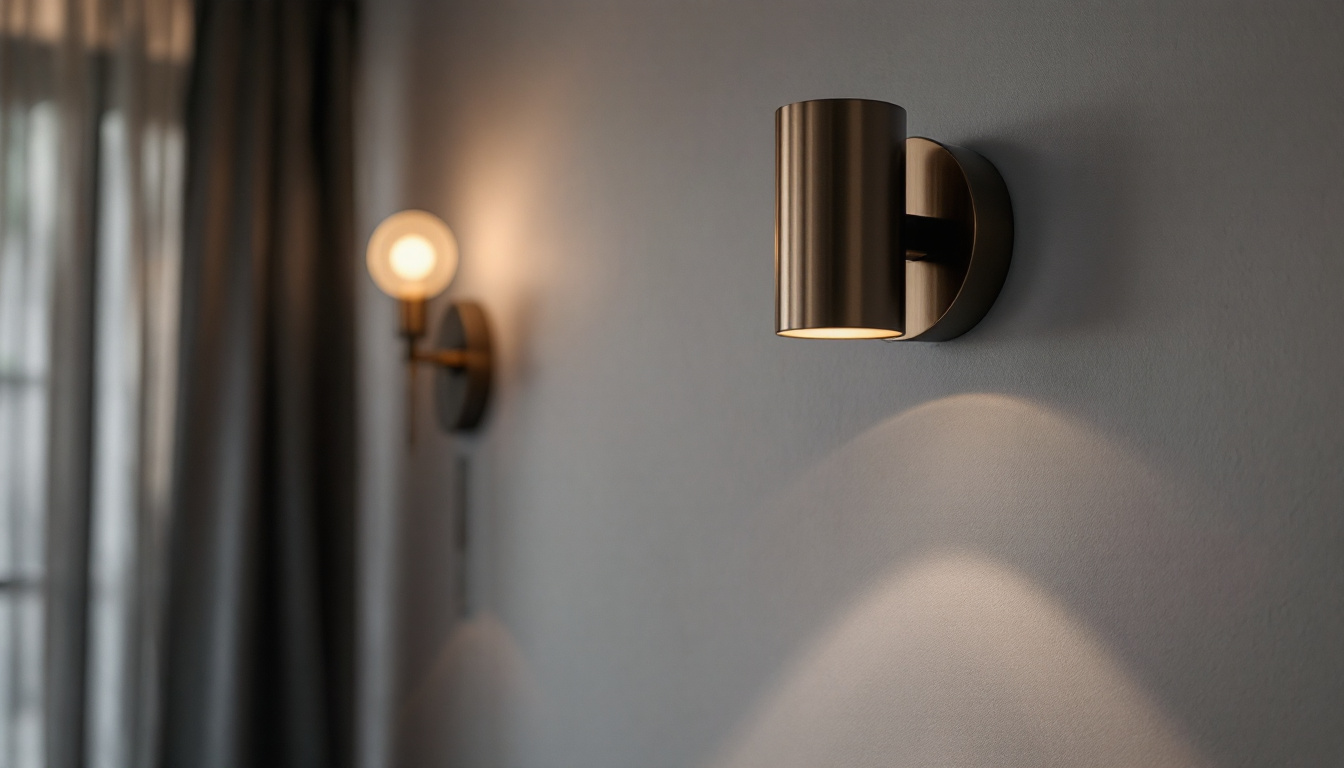
In the world of lighting design, ceiling lights play a crucial role in creating the right ambiance and functionality in both residential and commercial spaces. For lighting contractors, understanding the best practices for selecting, installing, and maintaining ceiling lights is essential for ensuring customer satisfaction and achieving optimal results. This article explores key considerations and strategies that lighting contractors should adopt to enhance their expertise in ceiling lighting.
Before diving into installation practices, it is vital for lighting contractors to have a comprehensive understanding of the various types of ceiling lights available. Each type serves different purposes and can significantly impact the overall aesthetic and functionality of a space.
Recessed lighting, often referred to as can lights or pot lights, is a popular choice for modern interiors. These fixtures are installed into the ceiling, providing a clean and unobtrusive look. They are ideal for task lighting and can be used to highlight specific areas within a room.
When installing recessed lights, it is essential to consider the spacing and placement to avoid creating shadows or uneven lighting. A common guideline is to space the lights approximately 4 to 6 feet apart, depending on the height of the ceiling and the desired brightness. Additionally, using dimmer switches with recessed lighting can enhance flexibility, allowing homeowners to adjust the ambiance according to different occasions, whether it’s a cozy family dinner or a lively gathering.
flush mount lights are designed to sit directly against the ceiling, while semi-flush mount lights hang slightly lower. Both types are versatile and suitable for various settings, including hallways, kitchens, and bedrooms. Their designs can range from minimalist to decorative, allowing contractors to cater to different aesthetic preferences.
Contractors should consider the height of the ceiling when selecting flush or semi-flush mount lights. For lower ceilings, flush mounts are preferable, as they do not protrude too far down, minimizing the risk of obstruction. Furthermore, the choice of bulb can also affect the overall feel of the space; opting for LED bulbs can provide energy efficiency while offering a range of color temperatures to suit different moods and tasks.
chandeliers and pendant lights add a touch of elegance and style to any space. They are often used in dining areas, entryways, and living rooms to create a focal point. When selecting these fixtures, contractors should pay attention to the scale and proportion relative to the room size.
For chandeliers, a good rule of thumb is to choose a fixture that is 1/12 the width of the room in inches. This ensures that the chandelier complements the space without overwhelming it. Additionally, pendant lights should be hung at an appropriate height to avoid obstructing views and to provide adequate illumination. The choice of materials and finishes for these fixtures can also greatly influence the room’s character; for instance, a crystal chandelier can add glamour, while a rustic pendant light can enhance a farmhouse aesthetic, allowing contractors to create a cohesive design that reflects the homeowner’s personal style.
Proper installation is critical to the performance and longevity of ceiling lights. Lighting contractors must follow best practices to ensure safety, efficiency, and aesthetic appeal.
Before beginning any installation, contractors must ensure that they comply with local electrical codes and regulations. This includes using the correct gauge of wiring, circuit breakers, and ensuring that all fixtures are rated for the intended use. Safety should always be the top priority.
Additionally, it is advisable to turn off the power supply at the circuit breaker before starting any installation work. This precaution helps prevent electrical shocks and ensures a safe working environment. Furthermore, contractors should consider using a voltage tester to double-check that the power is indeed off before proceeding with any wiring. This extra step can provide peace of mind and enhance safety during the installation process.
When installing ceiling lights, proper mounting techniques are essential for stability and safety. For recessed lighting, ensure that the housing is securely attached to the ceiling joists. For flush mount and semi-flush mount fixtures, use the appropriate mounting bracket and ensure that it is anchored properly.
For heavier fixtures like chandeliers, it is crucial to use a ceiling junction box that is rated for the weight of the fixture. This prevents sagging and potential accidents in the future. Additionally, it is important to consider the placement of the fixture in relation to the room’s layout. Proper positioning can enhance the overall ambiance and functionality of the space, ensuring that the light is distributed evenly and effectively illuminates the area.
Wiring is a fundamental aspect of ceiling light installation. Contractors should ensure that the wiring is correctly connected and that all connections are secure. Using wire nuts and electrical tape can help prevent loose connections that may lead to flickering lights or electrical failures.
Additionally, it is beneficial to label wires during installation. This practice simplifies future maintenance and troubleshooting, allowing for quicker identification of issues. Moreover, contractors should also consider the use of color-coded wiring, which can further aid in distinguishing between different circuits and functions. This attention to detail not only enhances the safety and efficiency of the installation but also provides a clearer understanding for anyone who may need to work on the electrical system in the future.
The choice of bulbs can significantly affect the performance and efficiency of ceiling lights. Lighting contractors should be knowledgeable about the different types of bulbs available and their respective benefits.
LED bulbs are becoming increasingly popular due to their energy efficiency and longevity. They consume significantly less energy than incandescent bulbs and can last up to 25 times longer. This not only reduces energy costs but also minimizes the frequency of bulb replacements.
On the other hand, incandescent bulbs provide a warm, inviting glow that some homeowners prefer. However, they are less energy-efficient and have a shorter lifespan. Contractors should educate clients on the benefits of LED lighting while also considering their preferences.
Understanding color temperature is crucial for creating the desired ambiance in a space. Measured in Kelvin (K), color temperature can range from warm (2700K) to cool (5000K). Contractors should recommend color temperatures based on the function of the room; for example, warmer tones are often preferred in living spaces, while cooler tones may be suitable for work areas.
Brightness is measured in lumens, and it is important to choose bulbs that provide adequate illumination for the intended space. Contractors should calculate the required lumens based on the room size and purpose to ensure optimal lighting levels.
Regular maintenance is essential for ensuring the longevity and performance of ceiling lights. Lighting contractors should provide clients with guidance on how to care for their fixtures and troubleshoot common issues.
Dust and dirt can accumulate on ceiling lights, diminishing their brightness and affecting the overall aesthetic. Contractors should advise clients to clean fixtures regularly using a soft cloth and mild cleaning solution. It is important to ensure that the power is turned off before cleaning to avoid accidents.
For fixtures with intricate designs, such as chandeliers, periodic deep cleaning may be necessary. This can involve removing crystals or decorative elements for thorough cleaning. Providing clients with a maintenance schedule can help them keep their lighting in optimal condition.
Even with proper installation and maintenance, issues may arise with ceiling lights. Contractors should be prepared to troubleshoot common problems such as flickering lights, dimming, or complete outages. Understanding the potential causes, such as faulty wiring or bulb issues, can help contractors quickly diagnose and resolve problems.
Encouraging clients to report any issues promptly can prevent further complications and ensure that their lighting remains functional and effective.
As the focus on energy efficiency and sustainability continues to grow, lighting contractors should be well-versed in eco-friendly practices. This not only benefits the environment but also appeals to clients who are conscious of their energy consumption.
Incorporating energy-efficient lighting solutions, such as LED fixtures and smart lighting systems, can significantly reduce energy consumption. Contractors should stay informed about the latest advancements in energy-efficient technology and offer these options to clients.
Smart lighting systems allow users to control their lighting remotely, adjust brightness, and set schedules, further enhancing energy savings. Educating clients about these solutions can lead to increased satisfaction and long-term benefits.
Proper disposal of old bulbs and fixtures is another important aspect of sustainability. Contractors should inform clients about recycling programs for bulbs, particularly for those that contain hazardous materials, such as compact fluorescent lamps (CFLs).
By promoting responsible disposal practices, contractors can contribute to environmental conservation while also enhancing their reputation as responsible professionals in the lighting industry.
Ceiling lights are a fundamental element of effective lighting design, and lighting contractors play a crucial role in their selection, installation, and maintenance. By understanding the various types of ceiling lights, following best installation practices, choosing the right bulbs, and promoting energy efficiency, contractors can elevate their services and meet the diverse needs of their clients.
Staying informed about industry trends and advancements will further enhance a contractor’s expertise and ability to deliver exceptional results. Ultimately, by adhering to these best practices, lighting contractors can ensure that their projects not only illuminate spaces but also create lasting impressions.
Ready to take your ceiling light installations to the next level? At LumenWholesale, we provide lighting contractors with the highest quality, spec-grade lighting products at prices that can’t be beaten. Say goodbye to local distributor markups and hello to a vast selection of reliable lighting solutions that meet rigorous industry standards. With free shipping on bulk orders, you can stock up on premium lighting without any hidden fees. Elevate your lighting projects with the perfect combination of quality, affordability, and convenience. Discover the value of wholesale lighting and make LumenWholesale your go-to source for all your lighting needs. Wholesale Lighting at the Best Value.

Discover the untapped potential of solar-powered LED pole lights with insider tips from top lighting contractors.

Discover how upgrading garage ceiling lights can drive business growth for lighting contractors.

Discover how lighting contractors can enhance their projects and boost client satisfaction with the strategic use of sconce wall lights.

Explore how innovative technologies are revolutionizing the lighting industry in “Flickering Light: Transforming the Way Lighting Contractors Work.” Discover the latest tools and strategies reshaping efficiency, design, and sustainability for modern lighting professionals..